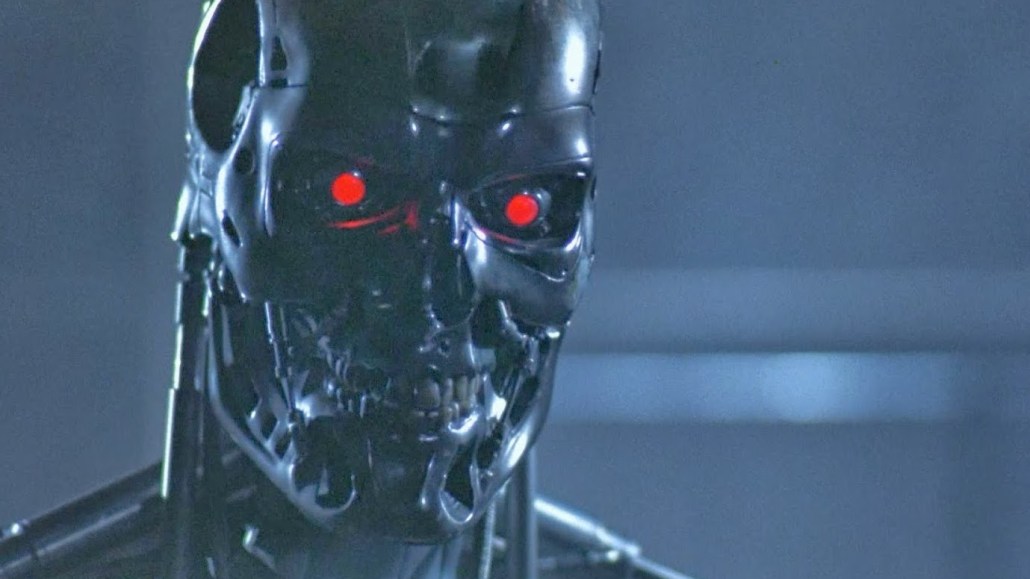Save 50% on a 3-month Digiday+ membership. Ends Dec 5.

This article was written by Jonathan Slavin, Chief Revenue Officer, CPXi
Programmatic media buying is here to stay, and for good reason: Automation is effective, efficient and hedges risk for all of the players.
Today’s technology allows both buyers and sellers fluid automation to maximize their campaigns at scale without the resources needed in traditional ink-and-paper processes. The buy side can now focus more energy driving ROI for marketers, while the sell side can more readily align its audience with a fresher experience — advertising designed for the end consumer.
The assumption, then, is that we owe a huge collective debt of gratitude to the machines that have transformed the industry, allowing us to rely less on pesky, fallible humans. Right?
Not exactly.
The argument for people
If you’re looking for a cautionary tale that illustrates the danger of relying solely on machines and devaluing the human element, go back and watch The Terminator. (Spoiler alert: It ends badly.) Sure, The Terminator is just a movie. It’s still clear to me that, in our quest for efficiency, we’ve rushed to fully automate what is — at its core — an industry based on trust, relationships and reliability.
Ad position: web_incontent_pos1
Before the technology-enabled pendulum swings too far to one side, we should take a moment to assess our progress and what’s at stake. Programmatic is a powerful tool, but it’s ultimately the skills, instincts and reliability of those wielding the tool that deliver value.
Let’s take a look at a few of the places in the programmatic process where the human touch not only facilitates the process by pulling the right levers, but actually brings important pieces of the puzzle that would remain missing without them.
The value of a gut instinct
The salesperson is often the first touch-point in the programmatic process. A salesperson has identified either a publisher hoping to drive revenue (on the supply-side) or a marketer working with an automated buy platform (demand-side) with specific metrics to hit.
There are examples of self-service interfaces that are part of a larger business model, but it’s hard to see how this kind of fully automated sales process could ever be as successful in identifying and matching the best fitting campaigns and corresponding tactics.
Ad position: web_incontent_pos2
As efficient as automation makes the process of client engagement, there’s no substitute for a salesperson who understands an advertiser’s specific history and KPIs, or who appreciates a publisher’s sensitivity to cutting-edge monetization strategies.
Quickest isn’t always smartest
One of the promises of automated optimization is the speed at which decisions can be made and acted upon. Hundreds of times a second, a machine can look at the performance of an ad/placement combination and decide whether or not it’s a success. If it is deemed valuable, the combination will be repeated. If performance does not pass muster, the combination is permanently eliminated from the mix.
But what if one of those failures points to a tweak that could be made that would result in a high-performing placement?
The machine says yes or no, while a person dedicated to the study of optimization would ask why or why not?
No one likes talking to a machine
For a poignant (and very funny) example of what can happen when robots are given too much credit for their seeming autonomy, watch this video of two “chatbots” interviewing one another.
Seeing their “frustration” build, I’m reminded of what it’s like to be a client who’s not getting straightforward reports and feedback regarding a campaign.
If the human element of the Optimizer is to ask Why?, it’s the account manager’s responsibility to answer in a way that illuminates and does not obscure.
A good (human) account manager can help a client understand how new ways of looking at their goals can often deliver untold new success. Right now, the robots cannot.
Let’s avoid the man vs. machine showdown
We’re probably not destined for a Terminator-like scenario, and programmatic advertising probably won’t bring about the end of the world.
Nonetheless, we should be looking for a happy marriage of technological automation and the hands-on human touch. In the end, the success of a programmatic media campaign relies on both the power of the technology and the skills and dedication of the humans behind the technology.
Turning again to Hollywood for one final analogy, just as Dorothy came to understand the intertwined roles of man and machine when she revealed the “man behind the curtain,” we would do well to remember those folks with their hands on the levers. It’s they, not cold heartless code, who have made the true advancements in programmatic media.
More from Digiday

Ulta, Best Buy and Adidas dominate AI holiday shopping mentions
The brands that are seeing the biggest boost from this shift in consumer behavior are some of the biggest retailers.

Digiday+ Research Subscription Index 2025: Subscription strategies from Bloomberg, The New York Times, Vox and others
Digiday’s third annual Subscription Index examines and measures publishers’ subscription strategies to identify common approaches and key tactics among Bloomberg, The New York Times, Vox and others.

U.K. retailer Boots leads brand efforts to invest in ad creative’s data layer
For media dollars to make an impact, brands need ad creative that actually hits. More CMOs are investing in pre- and post-flight measurement.
Ad position: web_bfu


